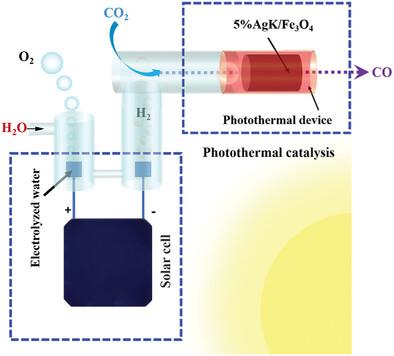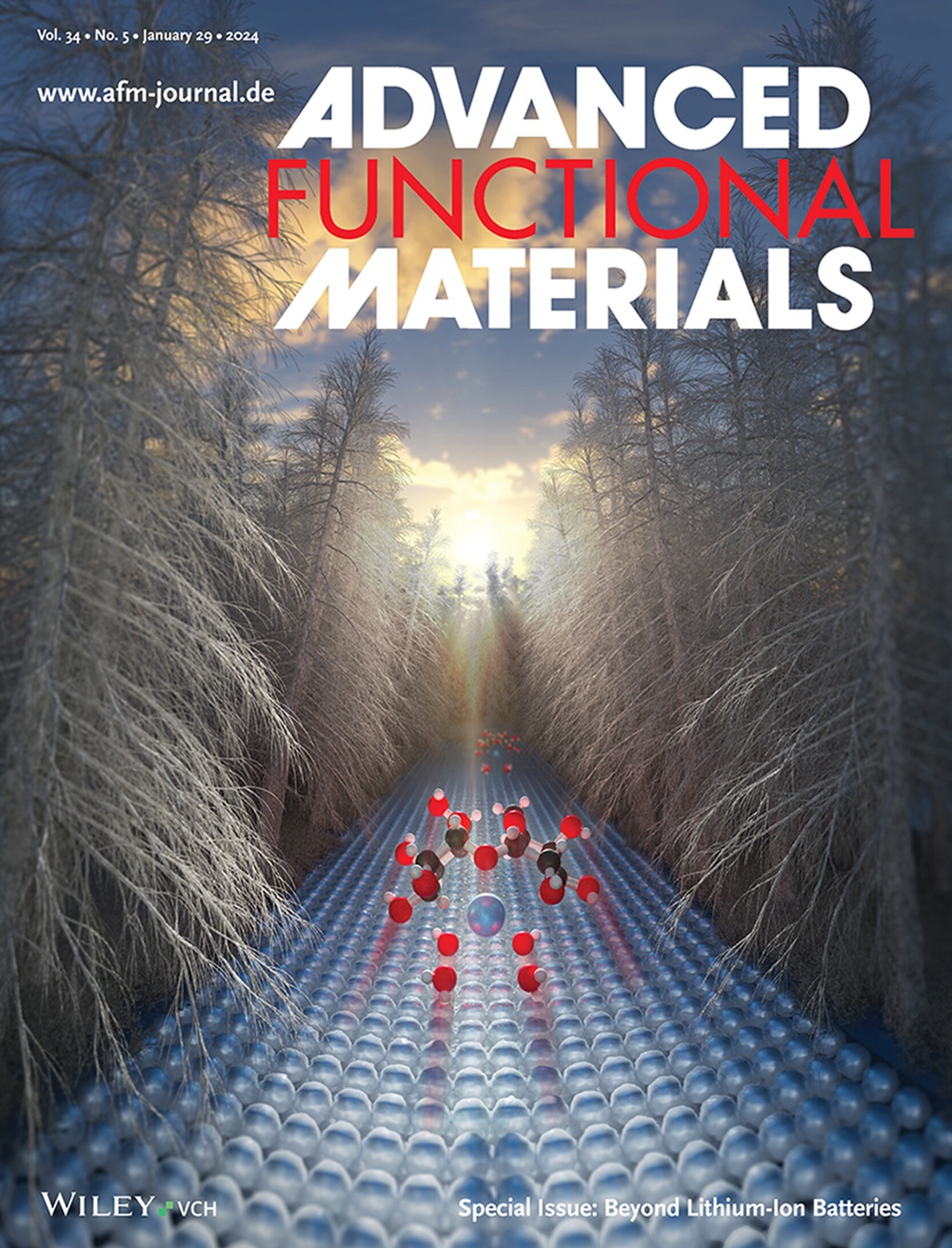Ambient Sunlight Driven Photothermal Green Syngas Production at 100 m3 Scale by the Dynamic Structural Reconstruction of Iron Oxides with 38.7% Efficiency
IF 18.5
1区 材料科学
Q1 CHEMISTRY, MULTIDISCIPLINARY
引用次数: 0
Abstract
Ambient sunlight-driven photothermal green syngas production via reverse water-gas shift (RWGS) reaction is important for carbon neutrality, which lacks efficient and inexpensive catalysts at low temperatures. This studydemonstrates that the scalable Fe3O4 supported with K atoms modified Ag nanoparticles (AgK/Fe3O4) exhibits a RWGS CO production rate of 1089 mmol g−1 h−1 at 300 °C and 100% CO selectivity through dynamic structural reconstruction, surpassing all reported platinum-based catalysts. In situ characterization and theoretical simulation indicate that the AgK nanoparticles activate H2 to reduce Fe3O4 as metallic Fe. Subsequently, the metallic Fe spontaneously reacts with CO2 to form CO and Fe3O4, thereby facilitating low-temperature RWGS. Owing to its superior low-temperature performance, AgK/Fe3O4 equipped with a homemade photothermal device achieves one sun-driven photothermal RWGS with a CO production rate of 1925 mmol g−1 h−1 and a 38.7% solar to enthalpy energy conversion efficiency. Furthermore, the enlarged outdoor demonstration yields 100.6 m3day−1 of green syngas with an H2/CO ratio of 3. This work paves the way for designing efficient platinum-free CO2 hydrogenation catalysts and introduces a new approach for sunlight-driven scalable green syngas production.

通过动态重构氧化铁结构在 100 立方米规模上以 38.7% 的效率生产环境阳光驱动的光热绿色合成气
通过反向水-气变换(RWGS)反应进行环境阳光驱动的光热绿色合成气生产对实现碳中和非常重要,但在低温条件下缺乏高效廉价的催化剂。本研究证明,用 K 原子修饰的 Ag 纳米颗粒(AgK/Fe3O4)支撑的可扩展 Fe3O4 通过动态结构重构,在 300 °C 时的 RWGS CO 生产率达到 1089 mmol g-1 h-1,CO 选择性达到 100%,超过了所有已报道的铂基催化剂。原位表征和理论模拟表明,AgK 纳米颗粒激活 H2 将 Fe3O4 还原为金属 Fe。随后,金属 Fe 自发地与 CO2 反应生成 CO 和 Fe3O4,从而促进了低温 RWGS 的产生。由于其优越的低温性能,配备自制光热装置的 AgK/Fe3O4 实现了太阳驱动的光热 RWGS,CO 生成率达到 1925 mmol g-1 h-1,太阳能与焓能的转换效率为 38.7%。这项工作为设计高效的无铂二氧化碳加氢催化剂铺平了道路,并为阳光驱动的可扩展绿色合成气生产引入了一种新方法。
本文章由计算机程序翻译,如有差异,请以英文原文为准。
求助全文
约1分钟内获得全文
求助全文
来源期刊

Advanced Functional Materials
工程技术-材料科学:综合
CiteScore
29.50
自引率
4.20%
发文量
2086
审稿时长
2.1 months
期刊介绍:
Firmly established as a top-tier materials science journal, Advanced Functional Materials reports breakthrough research in all aspects of materials science, including nanotechnology, chemistry, physics, and biology every week.
Advanced Functional Materials is known for its rapid and fair peer review, quality content, and high impact, making it the first choice of the international materials science community.
 求助内容:
求助内容: 应助结果提醒方式:
应助结果提醒方式:


